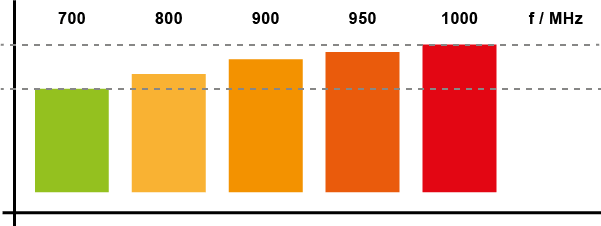Raspberry Pi Overclocking

Raspberry Pi has a CPU clock speed of 600 or 700 MHz depending on the model. If you want you can overclock Raspberry Pi, depending on the model, up to a maximum of 1,000 MHz or 1,200 MHz. An appropriate configuration is provided on the software side.
You have to know that Raspberry Pi overclocks dynamically. That is, if the load is high, then Raspberry Pi will dynamically clock up until it reaches the set clock rate. If overclocking is not necessary, then it does not happen and Raspberry Pi clocks with its basic clock.
The overclocking of Raspberry Pi is basically completely unspectacular and risk-free, if one uses the tool “raspi-config”.
Nevertheless, one should pay attention to one or the other overclocking. This is not only the case with Raspberry Pi, but applies to any other device that contains a CPU and is operated differently from its specification. Only with the specification of the manufacturer is an absolutely stable and reliable operation guaranteed.
If you do not really know what to do when overclocking and you do not understand what the influence has, you can not assign the resulting problems.
What should be considered when overclocking Raspberry Pi
Basically, nothing speaks against overclocking, if you really need more power. But then you have to be clear that there may be problems, which is why overclocking Raspberry Pi is not recommended.
In general, you have to expect that Raspberry Pi gets warmer when overclocking and you may need to use heatsinks and generally have to ensure better heat dissipation. But you can do without it. The ever-popular heat sinks bring relatively little. If the temperature of the CPU exceeds 85 degrees Celsius during operation, the CPU automatically lowers the clock rate.
If you engage in overclocking, then you should expect strange problems. There are problems with some SD cards that break the file system when Raspberry Pi (Model B) is overclocked to 950 or 1000 MHz. It is known that in older versions of Raspbian there was a bug with the timing on the SD memory card. The bug is fixed. That does not mean that the problem is gone forever. When overclocking you should expect that it may lead to defective data on the memory card. This is due to the asynchronous clocking of SD card and CPU.
Raspberry Pi models A, A +, B and B + overclock
Raspberry Pi has a base clock of 700 MHz. If you want you can overclock Raspberry Pi to a maximum of 1,000 MHz. An appropriate configuration is provided on the software side.
You have to know that Raspberry Pi overclocks dynamically. That is, if the load is high, then Raspberry Pi will dynamically clock up until it reaches the set clock rate. If overclocking is not necessary then it will not happen and Raspberry Pi will then clock down to 700 MHz.
Raspberry Pi 2 Model B overclock
Raspberry Pi 2 has a basic clock of 600 MHz, but is dynamically overclocked to 900 MHz in the normal state. The maximum possible is 1,200 MHz, which can also be fixed.
Raspberry Pi 3 Model B overclock
Raspberry Pi 3 B runs by default at a maximum of 1200 MHz. That’s not the end. However, it is not recommended to overclock it. Raspberry Pi configuration tool does not provide for overclocking Raspberry Pi 3 B.
Last noteworthy notes on overclocking
If you overclock Raspberry Pi, it usually only makes the processor faster. But that does not mean that the overall system gets faster. This keeps the speed of the various interfaces untouched.
Whether overclocking makes sense at all depends on how it is used. If you find Raspberry Pi generally too slow, you will not notice any significant improvement after overclocking. In this case, Raspberry Pi is simply unsuitable for the application.
Typically, a PC needs to be 20 to 30 percent faster to let the user even notice a difference between before and after. Only in certain situations, for example, when the line between smooth and jerky video playback is reached, then you notice even slight differences in performance.

Leave a Reply